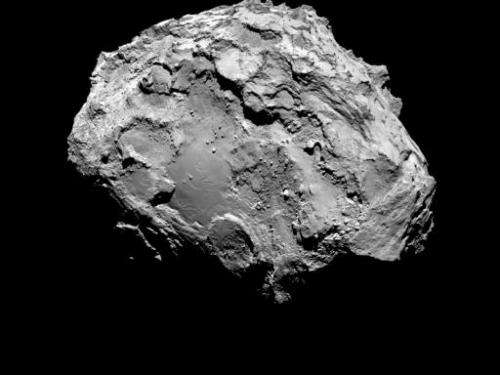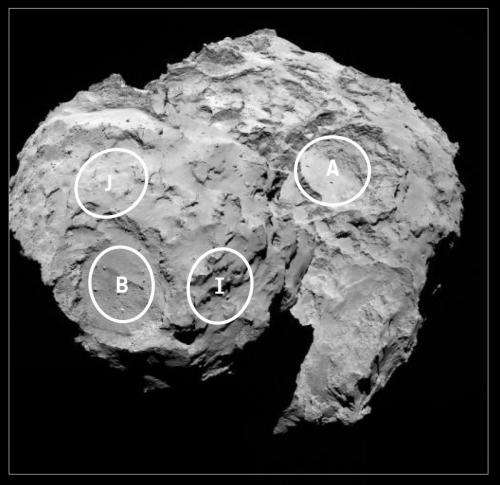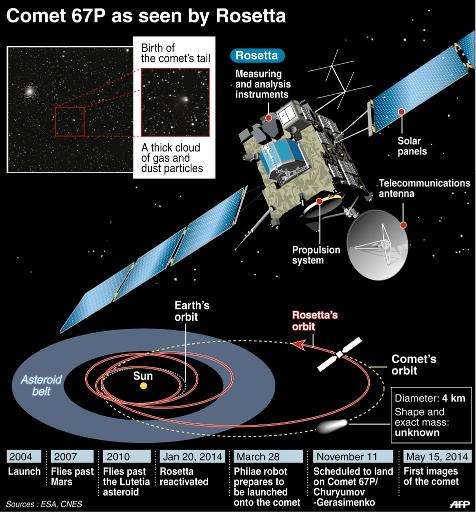Europe sees five possible sites for comet landing

The European Space Agency (ESA) on Monday said it had drawn up a shortlist of five possible sites for carrying out the first-ever landing on a comet.
Astronomers have been scrutinising high-definition photos sent back by the Rosetta spacecraft, which rendezvoused with Comet 67P/Churyumov-Gerasimenko on August 6 after a 10-year chase through the Solar System.
In mid-November, ESA intends to send down a robot laboratory, Philae, which will harpoon itself to the comet's surface and carry out a battery of scientific tests.
Five "candidate" zones for the landing have emerged, ESA said in a press release.
"Choosing the right landing site is a complex process," it cautioned.
The topography must be relatively flat and clear, and the surface stable. There also has to be sufficient sunlight to recharge the lander's batteries beyond its initial 64-hour lifetime—yet not so much as to cause overheating.
At the same time, though, the site must offer the most potential to find scientific treasure.
Comet "67P" comprises two lobes joined by a narrow neck, which has made it look like a rubber duck in space.
Three of the candidate sites are on the smaller lobe, or head of the "duck," and two are on the larger lobe, or the body, ESA said.

Comets are believed by astrophysicists to be ancient ice and dust left from the building of the Solar System around 4.6 billion years ago.
This cosmic rubble is essentially a time capsule—the oldest, least-touched material in our stellar neighbourhood.
Understanding its chemical ID and physical composition will give insights into how the planets coalesced after the Sun flared into light, it is hoped.

Rosetta is equipped with an array of sensors to help answer the question, but the biggest discoveries could be made by the 10 instruments aboard the 100-kilo (220-pound) lander.
The four-kilometre (2.5-mile) comet is on a 6.5-year orbit around the Sun and today is 522 million km from the star.
At their closest approach on August 13 2015, the comet and Rosetta will be 185 million km from the Sun, meaning an eightfold increase in the light received from the Sun compared with present levels, ESA said.
© 2014 AFP





















